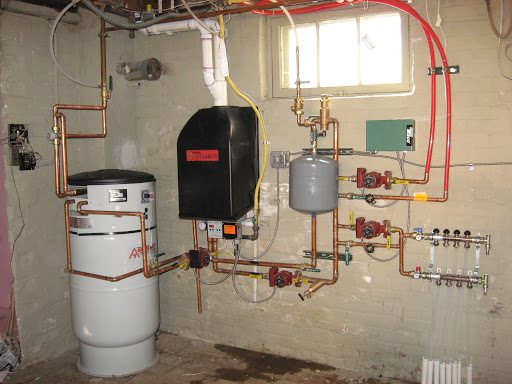Easy Ways to Maintain Your Home's Hot Water System Properly
Easy Ways to Maintain Your Home's Hot Water System Properly
Blog Article
They are making several good annotation on Tips For Maintaining Your Hot Water Heater in general in this article in the next paragraphs.

Warm water is vital for everyday comfort, whether it's for a rejuvenating shower or cleaning dishes. To ensure your hot water system runs effectively and lasts longer, routine upkeep is key. This article supplies practical suggestions and understandings on just how to preserve your home's hot water system to prevent disturbances and pricey repair work.
Introduction
Keeping your home's warm water system could appear daunting, yet with a few straightforward steps, you can guarantee it runs smoothly for many years to come. This overview covers everything from recognizing your hot water system to do it yourself upkeep tips and understanding when to contact specialist assistance.
Importance of Preserving Your Hot Water System
Routine upkeep not only expands the life-span of your hot water system however also ensures it runs efficiently. Ignoring upkeep can lead to reduced performance, higher energy costs, and even early failure of the system.
Indications Your Warm Water System Needs Upkeep
Recognizing when your hot water system requires attention can stop major problems. Keep an eye out for signs such as inconsistent water temperature level, weird sounds from the heater, or rustic water.
Recognizing Your Hot Water System
Prior to diving into upkeep tasks, it's helpful to comprehend the standard components of your hot water system. Normally, this includes the hot water heater itself, pipelines, anode poles, and temperature controls.
Regular Monthly Upkeep Tasks
Normal month-to-month checks can assist capture small concerns prior to they rise.
Purging the Water Heater
Purging your water heater removes sediment buildup, enhancing effectiveness and lengthening its life.
Monitoring and Replacing Anode Rods
Anode rods avoid rust inside the storage tank. Checking and changing them when worn is crucial.
Examining and Changing Temperature Settings
Adjusting the temperature settings ensures ideal performance and security.
DIY Tips for Maintenance
You can perform several maintenance jobs yourself to keep your warm water system in leading problem.
Looking for Leaks
On a regular basis check pipelines and links for leakages, as these can result in water damage and higher costs.
Examining Stress Alleviation Valves
Checking the pressure relief valve ensures it operates appropriately and stops too much pressure buildup.
Insulating Pipelines
Protecting hot water pipes lowers heat loss and can save energy.
When to Call an Expert
While DIY upkeep is helpful, some concerns call for professional expertise.
Facility Concerns Needing Professional Help
Instances consist of significant leakages, electrical issues, or if your hot water heater is regularly underperforming.
Regular Expert Maintenance Conveniences
Professional maintenance can consist of extensive evaluations, tune-ups, and ensuring compliance with safety requirements.
Conclusion
Regular upkeep of your home's warm water system is vital for efficiency, long life, and expense savings. By complying with these pointers and understanding when to seek specialist assistance, you can ensure a reliable supply of hot water without unforeseen disturbances.
How to Maintain an Instant Hot Water Heater
Before tinkering with your hot water heater, make sure that it’s not powered on. You also have to turn off the main circuit breaker and shut off the main gas line to prevent accidents. Also turn off the water valves connected to your unit to prevent water from flowing into and out of the appliance. 2. When you’re done, you have to detach the purge valves’ caps. These look like the letter “T†and are situated on either side of the water valves. Doing so will release any pressure that has accumulated inside the valves while at the same time avoid hot water from shooting out and burning your skin. 3. When the purge valves’ caps are removed, you have to connect your hosing lines to the valves. Your unit should have come with three hoses but if it didn’t, you can purchase these things from any hardware or home repair shops. You can also get them from retail stores that sell water heating systems. Read the user’s manual and follow it to complete this task properly. When the hosing lines are connected, open the purge port’s valves. 4. You should never use harsh chemical cleaners or solutions when cleaning your unit. Make use of white vinegar instead. It should be undiluted and you’ll probably use about 2 gallons. 5. Now flush your water heater. This task should probably take about 40 minutes. We can’t give you specific directions for this because the procedure is carried out depending on the type, model and brand of your heater. With that being said, refer to the user’s manual. 6. When you’re done draining the unit, you have to turn off the purge port valves again. Remove the hosing lines that you earlier installed on each of the water valves. Put the valve caps (purge port) back in their respective places and be very careful so as not to damage the rubber discs that are found inside these caps. 7. Now that everything’s back in place, check your user’s manual again to find out how to reactivate your water heating system. 8. Once it is working, turn one of your hot water faucets on just to let air pass through the heater’s water supply pipes. Leave the tap on until water flows smoothly out of it. https://www.orrplumbing.com/blog/2014/september/how-to-maintain-an-instant-hot-water-heater/

We had been introduced to that report about Water Heater Maintenance Tips You Can't Afford to Forget from someone on a different web blog. Liked our article? Please quickly share it. Let another person discover it. Thanks so much for your time spent reading it.
Click Here Report this page